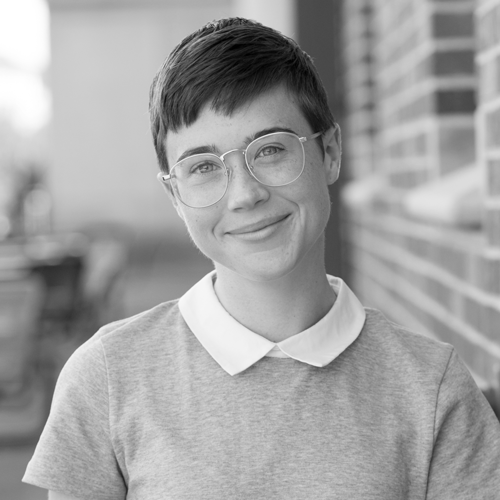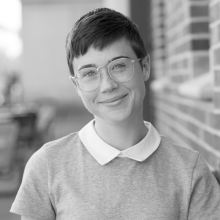IAALS Panel Stresses Need for Funding, ‘Mavericks’ in Legal Education Innovation
On December 7, 2021, IAALS co-hosted the fourth session of the Redesigning Legal Speaker Series, bringing together an audience of more than 100 people to explore the opportunities being created by regulatory innovation for legal education. “Redesigning Legal: The Role of Legal Education, Clinics, and Legal Labs” featured a panel including:
- Stacy Butler, director of the Innovation for Justice Program at the University of Arizona James E. Rogers College of Law;
- Anna Carpenter, professor of law and director of clinical programs at the University of Utah S.J. Quinney College of Law;
- April Dawson, associate dean of technology and innovation at North Carolina Central University School of Law; and
- Michele Pistone, professor of law and director of the Clinic for Asylum, Refugee and Emigrant Services at Villanova University Charles Widger School of Law.
Their conversation was moderated by Jordan Furlong, principal of Law21 and legal-sector analyst. Video of the event is available below, and a video with a transcript is available here.
Although recent regulatory reform efforts such as Utah’s sandbox and Oregon’s paraprofessional licensing program have generated a lot of buzz, there hasn’t been as much attention on efforts to innovate legal education. Anna Carpenter spoke to why law schools have been slower to embrace this trend: “If you look across legal education today, you can observe three factors that consistently drive or are correlated with innovation.” These factors include funding, “faculty unicorns” (i.e., someone personally driven to develop new and groundbreaking curricula, often despite lack of institutional incentives and in the face of opposition), and an innovative dean.
“A key reason why law schools have been slow to embrace innovation—and innovation tied to regulatory reform—is that the incentive structures within law schools as a general matter simply do not support curricular or programmatic change,” she said. “Let alone dramatic or deeply innovative change.” Something else that often gets lost in this conversation, Carpenter argued, is that law schools are governed by faculty. Although deans hold power, meaningful curricular change must be approved by a majority of faculty—who are strongly incentivized to produce scholarship rather than transform and innovate curriculum.
“Legal academia is designed to produce and replicate legal academics. It is not designed to produce and replicate innovative curriculum, designers, or teachers—so, to the extent it happens, it’s accidental, idiosyncratic, and driven by maverick individuals.”
Carpenter offered several steps to foster innovation within law schools, including encouraging funding for innovative curriculum and faculty unicorns as well as putting the pressure on law schools to train their students differently.
April Dawson spoke to the increasingly crucial role of technology in legal education: “I think the schools who are making great strides when it comes to offering courses related to law and technology are those schools that are embracing law and tech, the changes that we’re seeing in the practice of law, and [are] creating centers and institutes.” She credited the COVID-19 pandemic with opening the eyes of many law school professors and administrators as to just how much technology is changing the practice of law.
Dawson also explained that educators need to teach students how the practice of law has changed because of technology, whether it’s increasing efficiency, lowering costs, or fulfilling new tech-literacy ethical requirements. And, they need to apprise students of new areas of law that are related to technology, such as blockchain, privacy, and digital/decentralized finance. It’s also important, she said, not to make assumptions about where students or faculty are in terms of expertise, and to be open to the idea that adjunct professors may need to be hired in order to fully leverage available expertise.
The conversation then shifted to regulatory innovation. Michele Pistone spoke about her experience organizing and developing the VIISTA (Villanova Interdisciplinary Immigration Studies Training for Advocates) program, and how her background as an immigration lawyer shaped her passion for eliminating the many obstacles immigrants face in the U.S. civil legal system.
VIISTA’s curriculum, she explained, is centered on a set of competencies that Pistone and community stakeholders determined graduates would need in order to do the job. For example, instead of taking a traditional tests, students are tasked with writing a list of questions they’d ask a client to see whether or not they’re eligible for a specific form of relief.
There are a wide variety of students in the program, including employees at existing legal services organizations (e.g., receptionists, intake coordinators, and paralegals) who want to learn more and improve the work they’re already doing on the ground. “I think it’s really important that, as we start thinking about these new [regulations] at the state level, we realize there’s a lot of good that training can do to help legal services organizations do their work better.”
“We’re so early in the process of thinking about paraprofessionals in the law that we can’t even imagine . . . who will come to it and what they can do.” She encouraged people looking to create a program like VIISTA to keep their minds open, and not decide too early on what it needs to look like—or what its possibilities are.
VIISTA isn’t the only current example of innovation in legal education. The Innovation for Justice (i4j) program at the University of Arizona James E. Rogers College of Law, led by Stacy Butler, is the nation’s first and only cross-jurisdiction and cross-discipline legal innovation lab. In the spring of 2019, i4j students conceived a tier of civil legal professionals, licensed legal advocates, who could train to provide legal advice on topics such as protective orders, divorce, child custody, consumer protection, and housing.
Throughout the process, students collaborated with a wide variety of stakeholders, met with dozens of community members, vetted opportunities for nonlawyers to address justice gaps experienced by survivors, and explored how tiered services work in other jurisdictions. They also prototyped and tested the program in the community before ultimately launching. “I think the biggest advantage of doing this work from within a legal education institution,” Butler said, “is that we can put teams of students on these projects and build these new models, while simultaneously exposing the future of our profession to the access-to-justice opportunities that [regulatory] reform provides.” And, students learn how to work both with and within the community, to understand the reality of the justice gap and be part of disruptive solution building.
“Hopefully connecting [students] with those relationships and skills will equip them to work across disciplines or professions after graduation, because a lot of this reform work is going to need that interdisciplinary approach to really harness the opportunities that [regulatory] reform creates.”
Each panelist left the audience with advice. Butler stressed the need to not dive in right away: “Empathy first. Don’t start problem solving until you take the time to understand the problem you’re trying to solve from the perspective of the user or stakeholder that you’re trying to help.” Carpenter advised audience members to “invest in human beings. I think we often forget that . . . technology and curriculum and all these different structures and systems are created by and driven by human capital and human resources, and all the panelists today are an example of that.”
Pistone encouraged people to keep an open mind: “Having a new mindset. A lot of us in legal education assume that, because things have been taught in one way, that’s the way it has to be done in the future. But there’s been enough critique of legal education over the years that we should know we don’t have to necessarily adopt what we’ve been doing.” And, Dawson suggested staying involved: “Make sure you stay in touch with what’s going on in the legal community. Join organizations—your state bar organizations, national organizations. You can be involved, and then you need to demand more of your law schools. So when you see something that’s going on in the community, in real life, you take that back to your law school administrators, take it back to your law professors, take it back to your clinicians and demand more.”
We are so grateful to Stacy Butler, Anna Carpenter, April Dawson, and Michele Pistone for their insights, and to Jordan Furlong for moderating their inspiring conversation. We hope you’ll join us for the next session in our Redesigning Legal Speaker Series, which will be held in February.


